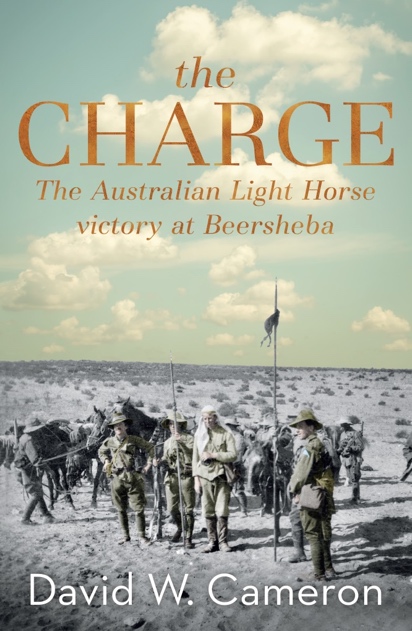The Battle of Beersheba took place on 31 October 1917 as part of the wider British offensive collectively known as the Third Battle of Gaza. The final phase of this all-day battle was the famous mounted charge of the 4th Light Horse Brigade. Commencing at dusk, members of the brigade stormed through the Turkish defences and seized the strategic town of Beersheba. The capture of Beersheba enabled British Empire forces to break the Ottoman line near Gaza on 7 November and continue the advance into Palestine. The Charge commemorates the 100th anniversary of the Australian victory at Beersheba – one of the last successful cavalry charges in history.

RRP: $35.00 (paperback)
The Turkish Gaza-Beersheba line extended for 40 kilometres between the Turkish bastion of Gaza and the heavily fortified town of Beersheba, and stopped any Allied advance into Palestine proper. It needed to be breached. After two failed attempts to capture Gaza, Allied forces decided to outflank it by turning the Turkish line at Beersheba. The attack was launched at dawn on 31 October but by late afternoon the British 20th Infantry Corps had made little headway towards the town and its vital wells. Lieutenant-General Harry Chauvel (an Australian), commanding the Desert Mounted Corps, ordered the 4th Light Horse Brigade forward to attempt to secure the position.
Brigadier William Grant, commanding the 4th Light Horse Brigade, responded by ordering troopers of the 4th and 12th Regiments to charge cavalry-style at the Turkish trenches, using their bayonets as ‘swords’, and the momentum of the surprise attack carried them through the Turkish defences. The water supplies were saved and over 1000 Turkish prisoners taken. The fall of Beersheba opened the way for a general outflanking of the Gaza-Beersheba Line, and within months enabled the capture of Jerusalem.
Drawing from first-hand accounts and archival material, Cameron pieces together how this important battle unfolded and captures the courage and tactical prowess of the Australian Light Horse – and the significance of this victory in the broader context of the Great War. Cameron has good skill in meshing together the facts of a the campaign with details that make an interesting account.
Cameron completed his PhD in biological anthropology at the Australian National University and is a former Australian Research Council QEII Fellow at the Department of Anatomy and Histology, University of Sydney. He has conducted fieldwork in Australia, Europe, the Middle East and Asia. He is the author of several books on Australian military history and primate evolutionary biology and has published over 60 papers in internationally peer-reviewed journals. His passion for recording the overarching history of Gallipoli has resulted in six books on the subject – including The Battle of Lone Pine and Sorry Lads, but the Order is to Go.
The Charge includes a good number of black and white images (sadly, several of them are quite grainy) as well as several good quality maps to illustrate the movement of units in several battles. Extensive notes, a list of references (sources) and a detailed index make this an academic quality publication.
The Charge is recommended to all with a general interest in military history and, in particular, the First World War allied campaigns against the Ottomans in the Levant.
Contact Marcus Fielding about this article.






